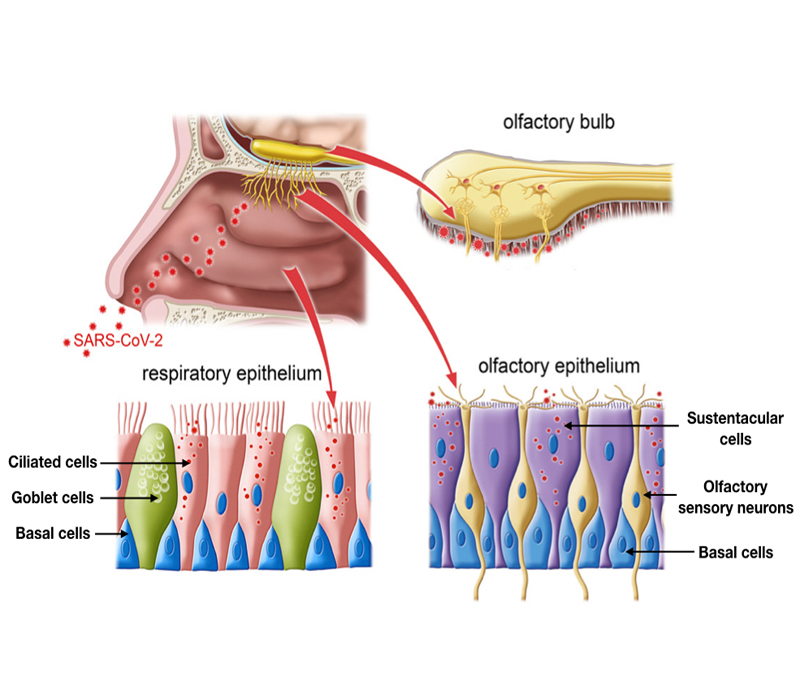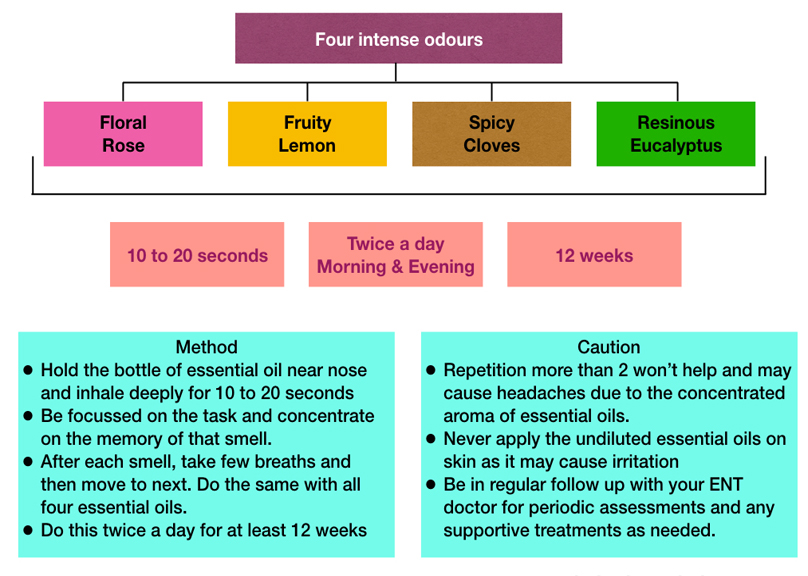Loss of smell in COVID 19 and Smell Retaining Therapy
• Our sense of smell gained a special relevance since COVID 19 pandemic, ironically, due to its disappearance.
• 30 to 80 percent people with COVID 19 report loss of smell or anosmia.
• For 90 to 95 percent affected people, smell comes back within few weeks.
Trends are Changing
• Loss of smell was the tell-tale sign of COVID 19 when the original virus came into picture.
• With each evolving variant, anosmia is becoming less common.
• There are still significant number of people for whom either their smell does not come back or it comes back reduced or in a distorted way.
Impact of loss of smell in our lives
• Inability to taste food: Altered apetite
• Inability to smell spoiled food : Food poisoning
• Inability to smell smoke, leaking gas or other hazardous chemical: Increases danger
• Many life’s pleasures come from enjoying specific smells: No longer possible
• Mood disorders such as depression
Answers are emerging
• The new research suggest that the novel coronavirus alters the smell by affecting the function of supporting cells or the sustentacular cells.
• These supporting cells can no longer provide nutrients and structural support to the olfactory neutrons rendering them incapable of transmitting smell.
• Since it does not affect the neutron directly, it is unlikely to cause permanent anosmia.

Smell retaining therapy (SRT)
• SRT is increasingly becoming popular for regaining sense of smell post COVID 19. Its is also known as Olfactory Training.
• SRT was originally developed by Dr. Thomas Hummel and Colleagues in 2009 in Germany.
• The logic behind SRT is that olfactory neutrons can regrow and reorganise throughout our lives, a process known as neuroplasticity. SRT takes advantage of this neuroplasticity to retrain the brain to learn how to smell again.
• The process involves repeated presentation of different smells in the form of essential oils though nose.



